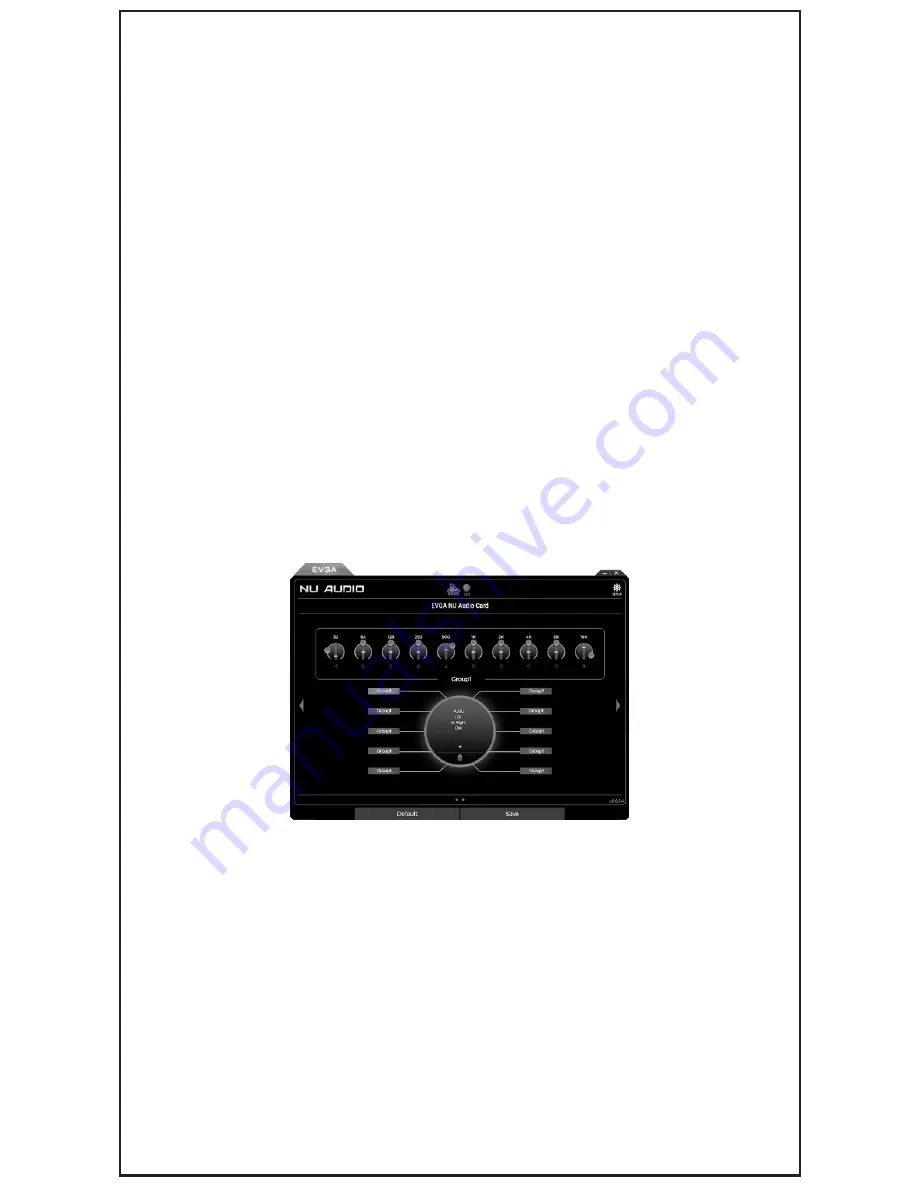
J. Microphone Select – Use this section when recording through the Microphone Recording Input.
K. Recording Auto/Back/Front Select – This box allows you to specify if your recording device is
plugged into the audio card directly (Back) or a front-panel audio port (Front).
L. Line-In Select – Use this section when recording through the Line-In Recording option.
M. Volume Control for Microphone – This slider allows you to control the volume of your
microphone input.
N. Mute Button – Mutes the volume.
O. Sample Rate Select – This selects the bit-rate to play back audio. This selects the bit-rate to
play back audio. Generally, this setting should be matched to the source audio for the highest
quality playback. Setting this too high will not necessarily improve audio, and has been known
to cause odd issues with applications/games. Setting it too low, however, will cause you to miss
details in the source audio. Please see the FAQ section to see how to find the bit-rate of your
audio tracks.
P. Sound Menu Toggle – The arrows switch between the Main Volume menu and the EQ menu.
EQ Menu
The EVGA NU Audio Card software features a customizable EQ menu, which allows for up to 30
profiles. Each profile allows you to label one of the six categories to sort your EQ profiles in any
way, and five profiles in each category, which may be named and customized. Simply click on one
of the Custom Categories, and click on the “+” sign. Type in the name of the profile and click Save.
These profiles do not feature preset EQ out of the box, so you will have to configure each profile
yourself.
What is EQ and Do I need it?
EQ, or Equalization, is a means to subjectively improve the sound quality by adjusting the balance
between frequencies. In most cases, high-end speakers and headphones need very little, if any,
EQ to sound great with a wide variety of audio. However, EQ can help to improve audio quality for
a wide variety of speakers and headphones, or even a type of content that just doesn’t quite sound
right. Only you can decide if your Audio needs EQ based on a combination of your speakers/
headphones, the type of content you listen to, and your ability to hear the difference after moving
the sliders.
What are all those sliders for?
EQ sliders represent a specific sound frequency, and raising or lowering each slider will have an
effect by increasing or decreasing the loudness (in dB) of that particular frequency. Starting at the
sub-bass frequencies of 32Hz to the upper bass at 250Hz, the lower midrange at 500Hz to the
midrange at 2kHz and upper midrange at 4kHz, and finally up to the many treble ranges beginning
around 8kHz to 16kHz, you generally want to focus on modifying the sliders between the 64Hz to
Содержание Nu Audio
Страница 1: ......








